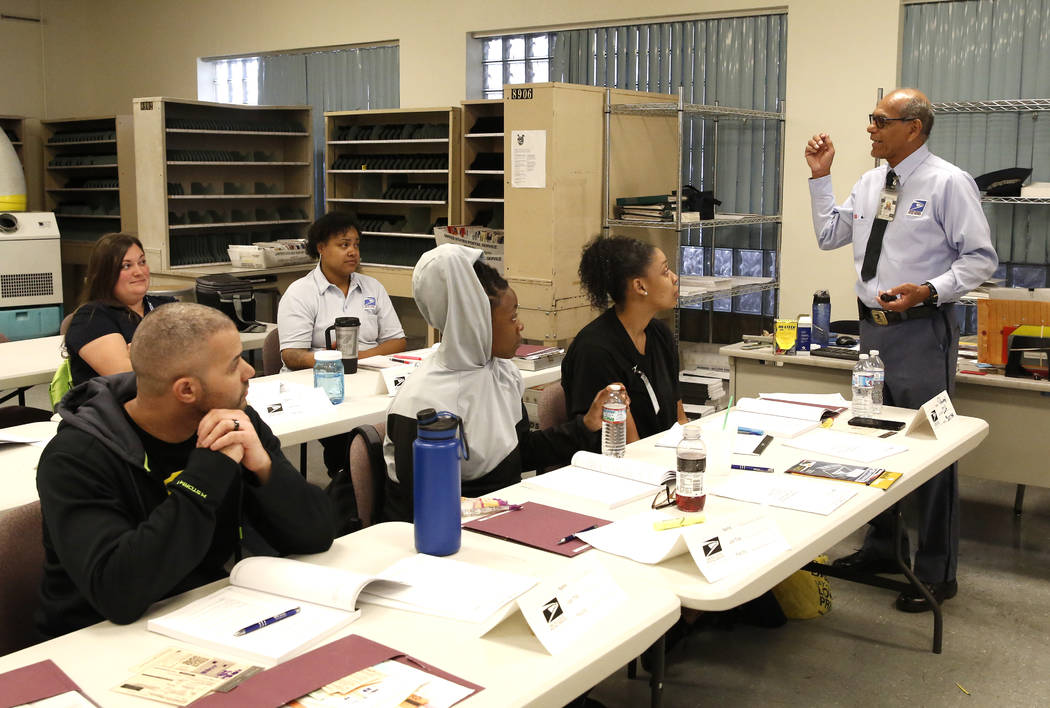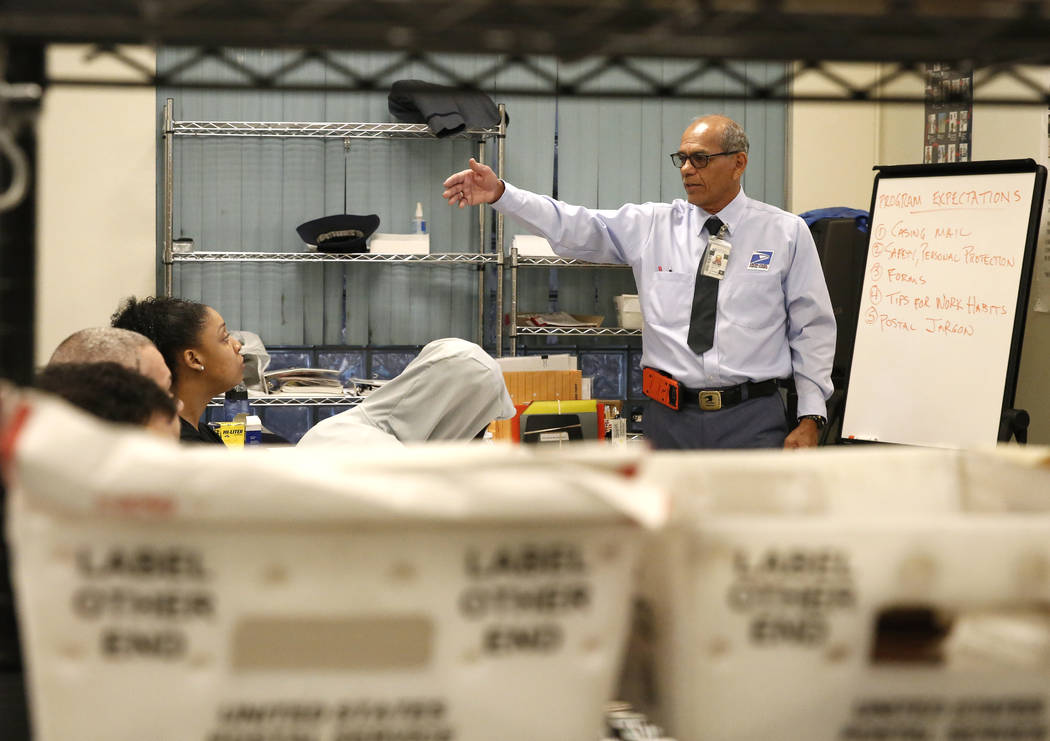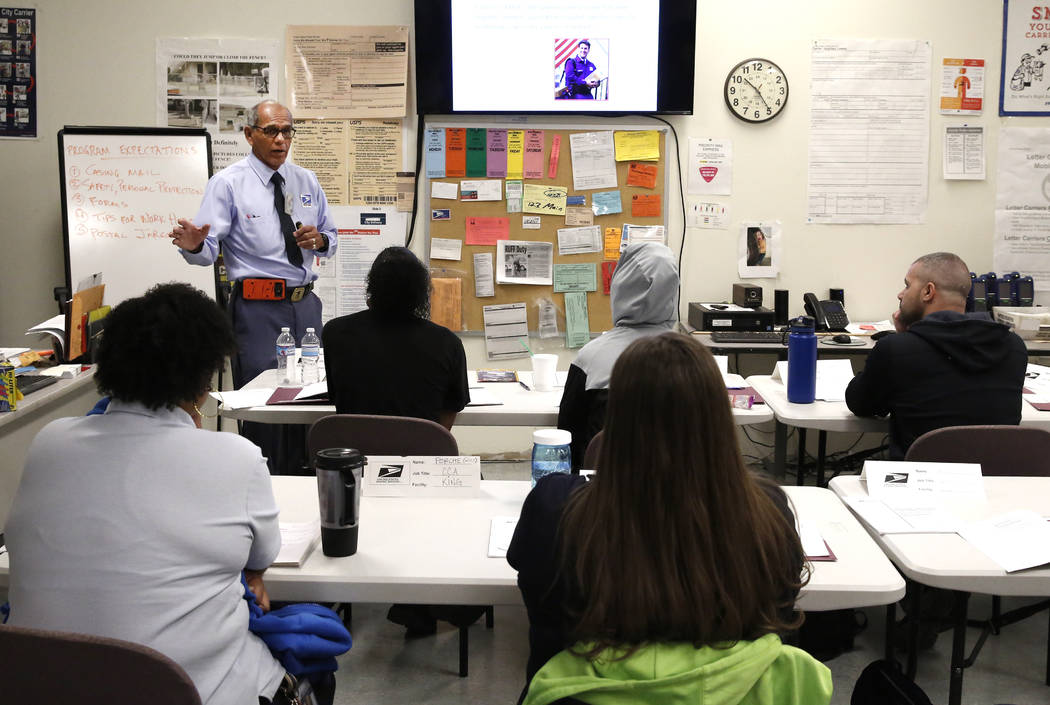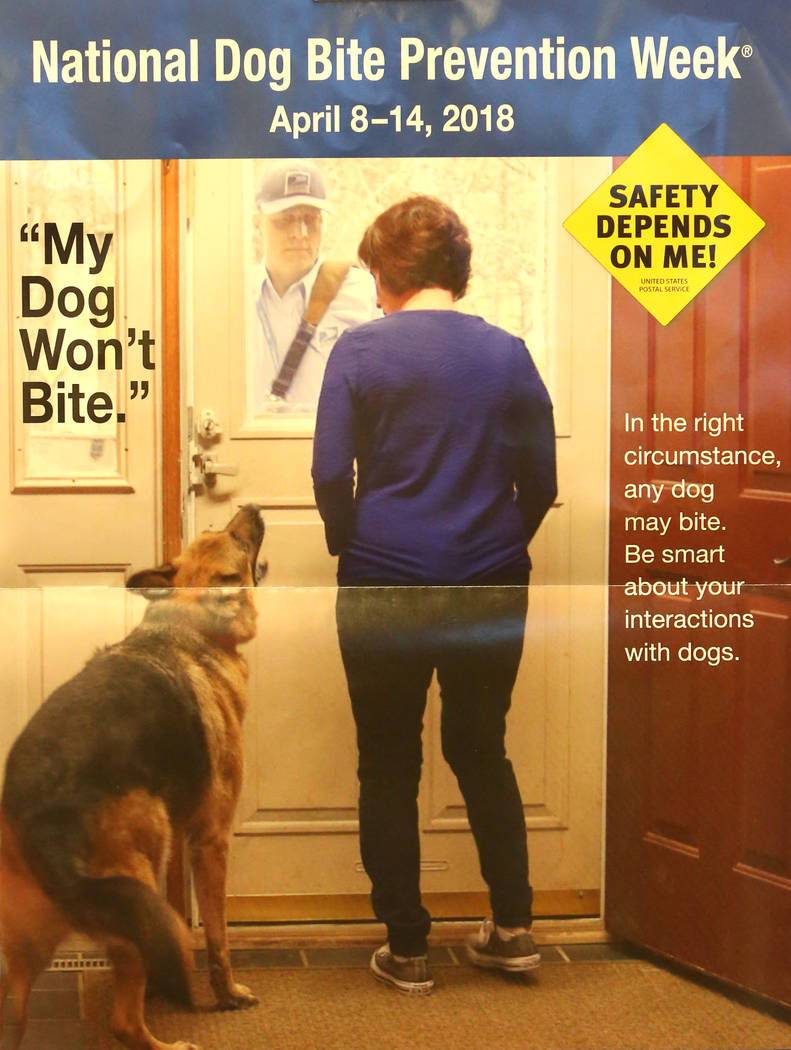After 3 dog bites, mail carrier trains co-workers on safety




Bobby Ramos had just slipped a handful of letters into their designated slot and turned to walk back to his truck when the retriever mix lunged at him.
It was 1995, and Ramos, a letter carrier who was just a few years into what is now a 24-year career filling mailboxes, had just fallen victim to his first dog bite — right on his rear end. He never forgot that scary lesson.
“You consider all dogs potentially dangerous, regardless of their size and whether they’ve got that wagging tail or not,” Ramos said Tuesday at a post office in Las Vegas, where he was leading a training session for new mail carriers.
Chomping canines are an everyday danger when your job requires you to be a stranger at the door, and the U.S. Postal Service is using National Dog Bite Prevention Week to remind residents and its employees that the risk can be minimized through some commonsense precautions.
In Nevada, 47 postal workers were bitten by dogs while on the job last year, down from 51 in 2016, according to the USPS. Twenty-seven suffered bites in the greater Las Vegas area, the same number as Philadelphia, which has more than twice the population.
Nationwide, the American Veterinary Medical Association estimates about 4.5 million people are bitten by dogs each year, and about 20 percent of those require medical attention.
“It’s serious to us, because we’ve had some really, really horrendous things over the years,” Postal Service spokesman David Rupert said.
Lucky for Ramos, none of his three dog bites was serious. The first two inflicted only minor scrapes. And while the latest, in 2001, sent him to urgent care for a tetanus shot, he was back in the mail truck the next day.
Now, he splits his time delivering mail on his route in the northwest Valley and training newcomers on the basics. Part of that instruction includes a half-hour video on preventing dog bites that the Postal Service shares with its employees annually during National Dog Bite Prevention Week.
For mail carriers, the well-known navy blue satchel used to carry mail is the first line of defense and can be wielded like a soft shield, Ramos said. Postal employees also carry a dog-friendly pepper spray, which has slowed a dog or two over Ramos’ career, giving him enough time to flee to safety.
Flight by itself is not in the instruction manual. Carriers are taught never to run away — the dog is faster, Ramos warns — and to instead strategically retreat to the nearest safe location where they can call a supervisor for help.
Ramos also has some tips for owners, including keeping dogs on a leash or fenced in.
“Basically, keep the dogs controlled,” he said.
While some postal carriers are traumatized after an attack, Ramos said he loves the job too much to let fear of another dog bite get in the way of it.
“It’s just like they tell you, if you fall off a horse, they say keep getting right back on again,” Ramos said. “I went right back.”
Contact Jessie Bekker at jbekker@reviewjournal.com or 702-380-4563. Follow @jessiebekks on Twitter.
When a dog bites
If you’re bitten by a dog, you should immediately irrigate the wound with water and then seek medical attention, said Dr. Jaime Primerano, chair of emergency services at Sunrise Hospital and Medical Center.
“It’s not something you’d typically treat at home because it is considered to be a higher risk of infection than any simple cut,” said Primerano, adding that the hospital’s emergency department typically handles a few dog bites each week.
Doctors will usually treat wounds with antibiotics to avoid infection and administer a tetanus shot if the patient hasn’t had one in more than five years. Though rare, rabies can be a risk if a dog is a stray or isn’t up-to-date on its vaccinations. In that case, patients can elect to receive a series of rabies shots.













